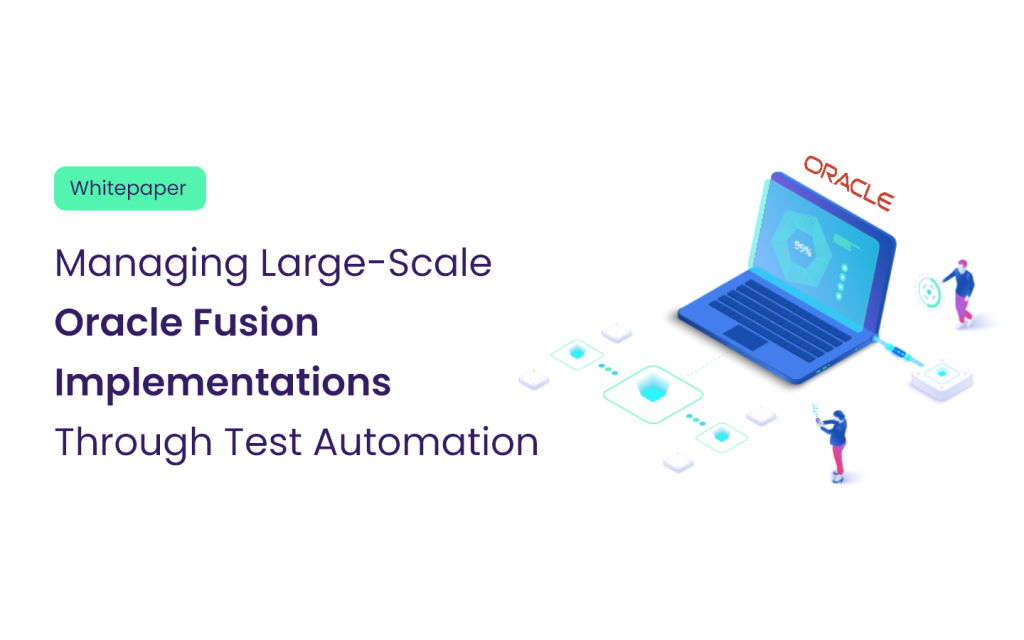Prelude
Implementing Oracle Fusion applications at scale is a monumental task, often riddled with complexities, extended timelines, and significant resource investments. With enterprises increasingly relying on Oracle Fusion’s robust ecosystem—spanning ERP, HCM, SCM, and more—the need for reliable and efficient test automation is more critical than ever. In this whitepaper, we will explore how test automation empowers organizations to overcome the challenges of large-scale Oracle Fusion implementations, ensures optimal performance, and delivers long-term value.
By targeting decision-makers and C-suite executives, we aim to demonstrate why test automation should be at the core of your Oracle Fusion testing strategy. This guide blends technical insights with business implications, backed by real-world data, expert opinions, and actionable strategies.
The Challenges of Large-Scale Oracle Fusion Implementations
Complexity of Multi-Module Integrations
Oracle Fusion applications are inherently interconnected, with modules like ERP, HCM, SCM, and EPM often relying on shared data and workflows. Ensuring these modules function seamlessly requires rigorous testing across all integration points. The complexity increases exponentially when customizations are introduced, as they can create unforeseen dependencies and vulnerabilities.
Example: Consider a scenario where a financial module in ERP integrates with supply chain workflows in SCM. A minor configuration change in one module can ripple through and disrupt multiple processes, requiring meticulous validation across systems.
Manual Testing Limitations:
- Time-Intensive: Testing every integration manually is laborious and often impractical within project timelines.
- Error-Prone: Human testers can overlook edge cases, especially in highly interconnected workflows.
- Scalability Issues: As implementations grow in size and complexity, manual testing struggles to keep pace.
Quarterly Updates: A Double-Edged Sword
Oracle’s quarterly updates are designed to enhance functionality, security, and performance. However, these updates often introduce breaking changes, requiring thorough regression testing before deployment
Stat Highlight: Research shows that 45% of enterprises experience critical post-update issues due to insufficient testing.
Challenges with Quarterly Updates:
- Short Timelines: Oracle provides limited windows to test and certify updates, putting pressure on QA teams.
- Customization Risks: Custom scripts and workflows may break after an update, necessitating tailored test cases.
- High Frequency: With updates occurring four times a year, maintaining manual testing processes.


